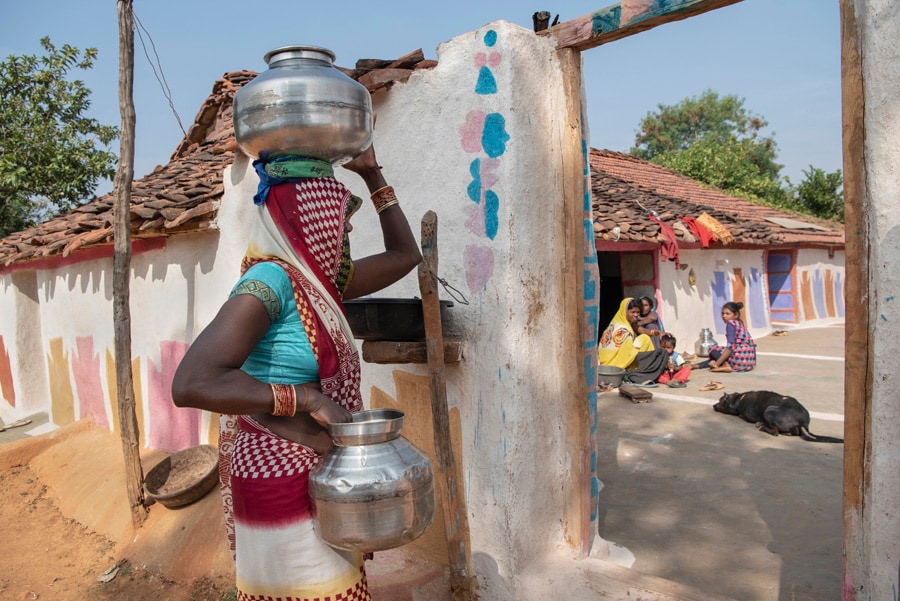
In India's water-stressed villages, Modi seeks a tap for every home
India, one of the world's most water-stressed countries, is halfway through an ambitious drive to provide clean tap water by 2024 to all of the roughly 192 million households across its 600,000 villages
 Bhoori Bai Ggound, 33, carries water containers that she filled from a hand pump well in Imlidol, India, Nov. 30, 2021. India, one of the world’s most water-stressed countries, is halfway through an ambitious drive to provide clean tap water by 2024 to all the roughly 192 million households across its 600,000 villages. (Saumya Khandelwal/The New York Times)
Bhoori Bai Ggound, 33, carries water containers that she filled from a hand pump well in Imlidol, India, Nov. 30, 2021. India, one of the world’s most water-stressed countries, is halfway through an ambitious drive to provide clean tap water by 2024 to all the roughly 192 million households across its 600,000 villages. (Saumya Khandelwal/The New York Times)
IMLIDOL, India — The pipes are laid, the taps installed and the village tank is under construction — all promising signs that, come spring, Girja Ahriwar will get water at her doorstep and finally shed a lifelong burden.
“I go out and put the jerrycans in the queue at around 5 a.m. and wait there with the children,” Ahriwar, a mother of three who lives in the central Indian state of Madhya Pradesh, said about her routine of fetching from the village hand pump. “Sometimes it could take five or six hours. I have to stay there because if I leave, someone else moves ahead.”
India, one of the world’s most water-stressed countries, is halfway through an ambitious drive to provide clean tap water by 2024 to all of the roughly 192 million households across its 600,000 villages. About 18,000 government engineers are overseeing the $50 billion undertaking, which includes hundreds of thousands of contractors and laborers who are laying more than 2.5 million miles of pipe.
The project has a powerful champion in Prime Minister Narendra Modi, who has slashed through India’s notorious red tape and pushed aside thorny political divisions to see it through. His success thus far helps explain his dominance over the country’s political landscape.
Modi has remained popular despite a weak economy and a bungled initial response to the coronavirus that left hundreds of thousands dead. He has increasingly relied on communal politics, continuing to consolidate a Hindu nationalist base he has worked for decades to rally.
©2019 New York Times News Service







